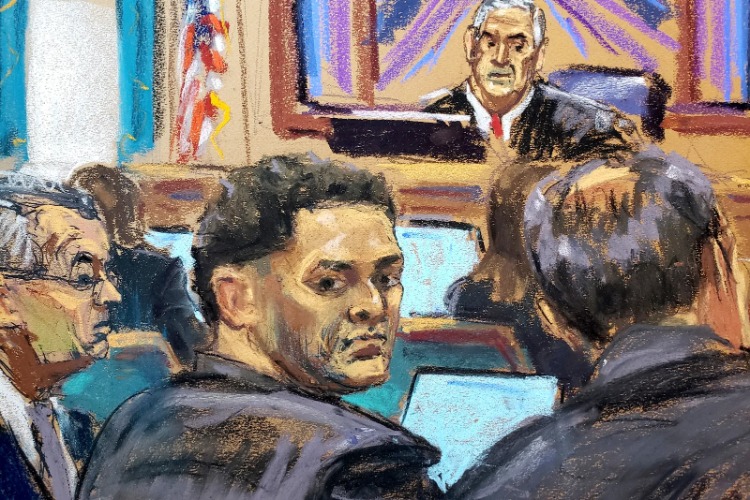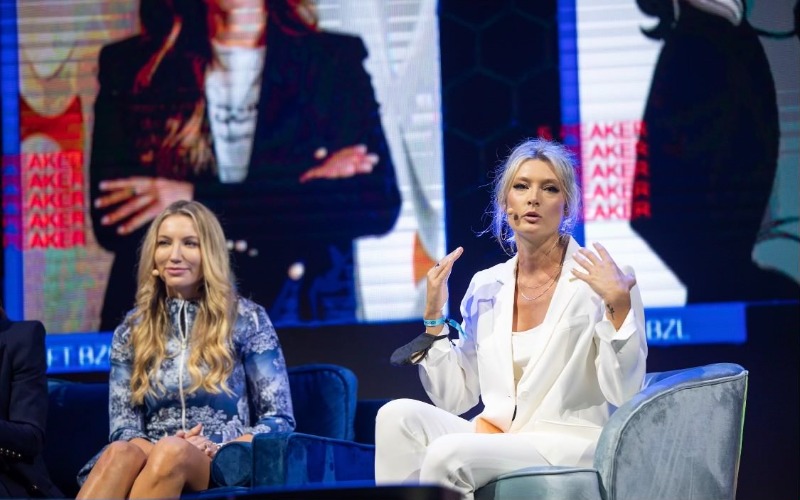Casey Craig is Global Head of Communications at CoinDesk, an acclaimed financial news platform specializing in digital finance and Web3. In this role, she manages all aspects of communication and public relations. With nearly 10 years of experience in strategic media and communication services for fintech and blockchain organizations, her work also contributed to the conviction of Sam Bankman-Fried in Nov. 2023. Additionally, Craig is the newest member of BRAVO’s reality show, Winter House Season 3. Innovation & Tech Today had the chance to speak with Craig about misinformation, the monumental SBF trial, and the role of PR in providing accurate information about the crypto and Blockchain industry.

Innovation & Tech Today: I’ll dive right in with my first question. Specifically, with my experience writing about crypto, I know there’s a lot of misinformation in the space. I wanted to get your take on what the public can do to verify information whenever they’re trying to learn more about what’s happening in the industry.
Casey Craig: Absolutely. As you said, the spread of misinformation has been notorious in crypto almost since the beginning. It took a really long time for journalists and well-known publications, everything from Bloomberg to The Wall Street Journal, to start covering crypto regularly. So people were getting lots of their information on Reddit and obscure social media channels.
It was kind of perpetuating the same misinformation, and I think that’s still a problem today. A lot of people, even day traders, will be pulling their information from Twitter or other social media platforms. But at the end of the day, anyone can post a tweet about anything that’s not verified information.
So I always suggest to anyone interested in learning about crypto or wanting to read out daily to get more immersed in the market and industry to go across many kinds of news outlets. Not just reading one article and taking it verbatim but making sure that you’re reading across multiple verified sources so you’re collecting information not just from one person but several.
I&T Today: Could you give us an overview of the current status of the SBF trial for our audience? I think you could give great insight into what it is, how you’re dealing with it, and how it will change the industry.

Craig: Sam Bankman-Fried was found guilty last week on seven criminal charges against him. He’s actually facing a maximum sentence of 115 years in prison. So he’s not getting a slap on the wrist in any way. This was taken extremely seriously. For anyone who wasn’t familiar with this, last year on Nov. 2nd, CoinDesk published a story exposing a lot of fraudulent behavior in Alameda, which is like the trading subsidiary of FTX on their balance sheet.
That was kind of the tip of the iceberg. It snowballed into a lot of other criminal activity with FTX fraud investors. And that led to a huge collapse in the market. New York Magazine did a really good headline of him- they said, “The virtue is the con.” Before this happened, SBF was heralded as the Robin Hood for crypto. He’s a good guy. He’s bringing mainstream into crypto. Tom Brady had ties with FTX, along with many famous athletes and other well-known people, not just in crypto but in the mainstream.
The story we published exposed that not only was all that fake, but he was a very bad actor- one of the most bad actors in space. When he was found guilty last week, I think people might have perceived it as a tough day for crypto, but that’s not true because anytime you expose a bad actor in any industry that has moved as quickly as crypto has, it just shows the evolution. You’re just basically weeding out anyone who’s problematic or not conducive to the longevity of this industry.
So I thought it was a good day for crypto, especially because any criminal charges against these bad actors show how we’re getting close to regulation. This is a good thing for crypto because it verifies and legitimizes this industry.
I&T Today: What role do you believe PR teams play in helping businesses and the public understand the challenges and the potential for Blockchain and crypto?
Craig: I think PR people are critical for this. I’ve personally been in crypto PR for eight years. In the beginning, our job was just to dilute information- very complicated information- on the breakdown of Blockchain, technology, and Cryptocurrency. We would have to basically translate a white paper.
You’re breaking down very high-tech complicated language and technical analysis into bite-size information the nation can understand. So, I think with any emerging technology, PR people are critical of this because they are the ones who are translating this into the mainstream. And they’re doing it through the talking points they’re feeding their spokespeople, the press services they’re writing to, and working with the journalists to develop these stories.
It was impossible to get journalists to cover crypto in the beginning. I was like cold-calling people. I felt like a salesperson. And a great story is I had to cold call Paul Vigna. I think he recently left to write another book, but he was one of the most reputable financial journalists at The Wall Street Journal, and he just started to cover crypto.
He was like the GOAT, and I had to cold call him and get him to meet with me and cover crypto more. The reason I got him to meet with me is because I worked on his Twitter, and I found out he was a fan of Stephen King too. That shows you the extent of what it took as a PR person to get mainstream journalists to cover crypto. This is why the mainstream and mass audiences understand crypto and Blockchain because they’re reading reputable news. So, it was not an easy task in the beginning.
I&T Today: Can you give me an example of a PR strategy that helped provide information and build trust in the context of the rapidly developed crypto and Blockchain industry?
Craig: I would say always be honest and transparent. And I think one PR strategy I’ve used in the past, and what I tell spokespeople, is whatever you’re conveying or trying to say, make sure anyone from your 13-year-old nephew to 80-year-old grandmother can understand because that is how the mainstream will understand it. The science is you have to break it down into something understandable because it is technical.











